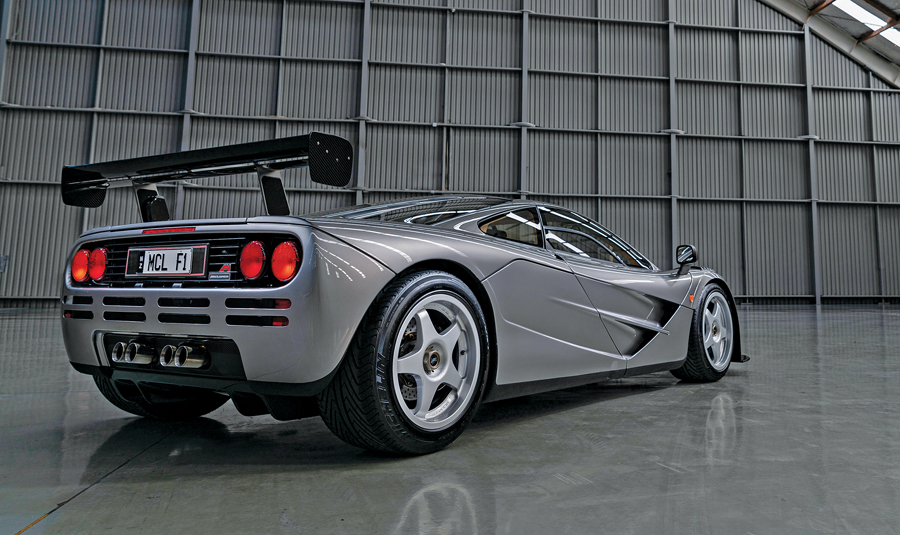Chassis Number: SA9AB5AC1R1048018
This F1 was built in 1994 and originally finished in Midnight Blue Pearl over a black interior and dispatched to its first owner in Japan. In 1999 the F1 was sold to a collector in Germany, and he returned the car to the factory in 2000 for a series of upgrades to LM specifications.
This work included installation of the High Downforce Kit, a transmission cooler, two additional radiators, and a modified exhaust system. The air conditioning was upgraded, a radio was added to the CD player, the headlamps were changed to gas-discharge units, and the steering wheel was exchanged for a 14-inch unit. The exterior was refinished in the current livery of platinum silver metallic, and the interior was retrimmed with cream leather highlighted by beige and brown Alcantara, cream Wilton carpets and a beige Alcantara headliner. The dampers and springs were also upgraded to race-spec units and adjusted to their softest setting for comfortable road use. Finally, the standard 17-inch wheels were replaced by special 18-inch GTR wheels mounted with Michelin Pilot Sport tires.
In 2004 the F1 was acquired by a collector based in Singapore who minimally drove the car over the following three years. The McLaren was carefully garaged while enjoying the company of the owner’s other F1.
In October 2007 the McLaren was acquired from the Singapore collector by the consignor, a marque enthusiast based in New Zealand.
Offering all the performance of the outrageously powerful and hyper-rare F1 LM at a fraction of the investment, F1018 is an extremely desirable example.

